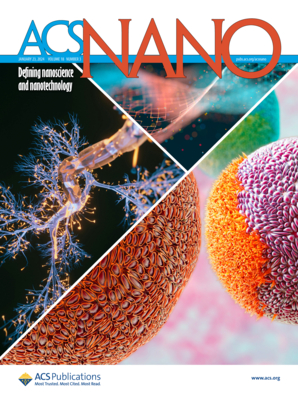Artificial Stacking Dependences of Band Structures and Second-Harmonic Generations in Bilayer Hexagonal Boron Nitride
IF 15.8
1区 材料科学
Q1 CHEMISTRY, MULTIDISCIPLINARY
引用次数: 0
Abstract
Stacking order critically influences the optoelectronic properties of 2D van der Waals materials. Here, first-principles calculations were performed to study the geometries, band structures, and second-harmonic generation (SHG) of hexagonal boron nitride (h-BN) bilayers constructed by the relative shifts and rotations between h-BN layers. Our results indicate that the stability, interlayer coupling, and band structures of h-BN bilayers are sensitive to the stacking orders. For interlayer sliding, the direction and size of lateral displacement obviously affect the band gap and components at the band edge. By contrast, the band structure of twisted h-BN bilayers is highly angle-dependent, and when the sum of twist angles in two moiré superlattices is 60°, they have similar band structures due to identical band folding. As for the second-order susceptibility, interlayer sliding tends to enhance the SHG intensity compared to that of the original AA stacking. When the incident angle of the pump light deviates from the normal direction of the h-BN bilayer, the change in lattice symmetry induced by interlayer sliding results in distinct variations in SHG patterns, thereby facilitating identification of the corresponding structures through polarization-resolved SHG spectroscopy. For twisted configurations, as the rotation angle increases from 0 to 60°, the evolution of SHG intensity departs significantly from the coherent superposition model due to the strong exciton effects in h-BN bilayers. Although the interlayer rotation preserves the SHG polarization image, the experimental measurement of relative SHG intensity enables the determination of the rotation angle, which allows for distinguishing structures of twisted h-BN bilayers.

双层六方氮化硼带状结构和二次谐波发生的人工堆积依赖性
堆积顺序对二维范德华材料的光电性能有重要影响。本文采用第一性原理计算方法研究了六方氮化硼(h-BN)双层层的几何形状、能带结构和二次谐波产生(SHG)。结果表明,h-BN双分子层的稳定性、层间耦合和能带结构对层序的变化非常敏感。对于层间滑动,横向位移的方向和大小明显影响带隙和带边分量。相反,扭曲h-BN双分子层的能带结构具有高度的角度依赖性,当两个莫尔维尔超晶格的扭转角之和为60°时,由于相同的能带折叠,它们具有相似的能带结构。对于二阶磁化率,层间滑动相对于原AA堆叠有增强SHG强度的趋势。当泵浦光的入射角偏离h-BN双分子层的法线方向时,层间滑动引起的晶格对称性变化导致了SHG图的明显变化,从而便于通过偏振分辨SHG光谱识别相应的结构。对于扭曲构型,当旋转角度从0°增加到60°时,由于h-BN双分子层中存在强激子效应,SHG强度的演变与相干叠加模型明显偏离。虽然层间旋转保留了SHG偏振图像,但实验测量的相对SHG强度可以确定旋转角度,从而可以区分扭曲的h-BN双层结构。
本文章由计算机程序翻译,如有差异,请以英文原文为准。
求助全文
约1分钟内获得全文
求助全文
来源期刊

ACS Nano
工程技术-材料科学:综合
CiteScore
26.00
自引率
4.10%
发文量
1627
审稿时长
1.7 months
期刊介绍:
ACS Nano, published monthly, serves as an international forum for comprehensive articles on nanoscience and nanotechnology research at the intersections of chemistry, biology, materials science, physics, and engineering. The journal fosters communication among scientists in these communities, facilitating collaboration, new research opportunities, and advancements through discoveries. ACS Nano covers synthesis, assembly, characterization, theory, and simulation of nanostructures, nanobiotechnology, nanofabrication, methods and tools for nanoscience and nanotechnology, and self- and directed-assembly. Alongside original research articles, it offers thorough reviews, perspectives on cutting-edge research, and discussions envisioning the future of nanoscience and nanotechnology.
 求助内容:
求助内容: 应助结果提醒方式:
应助结果提醒方式:


